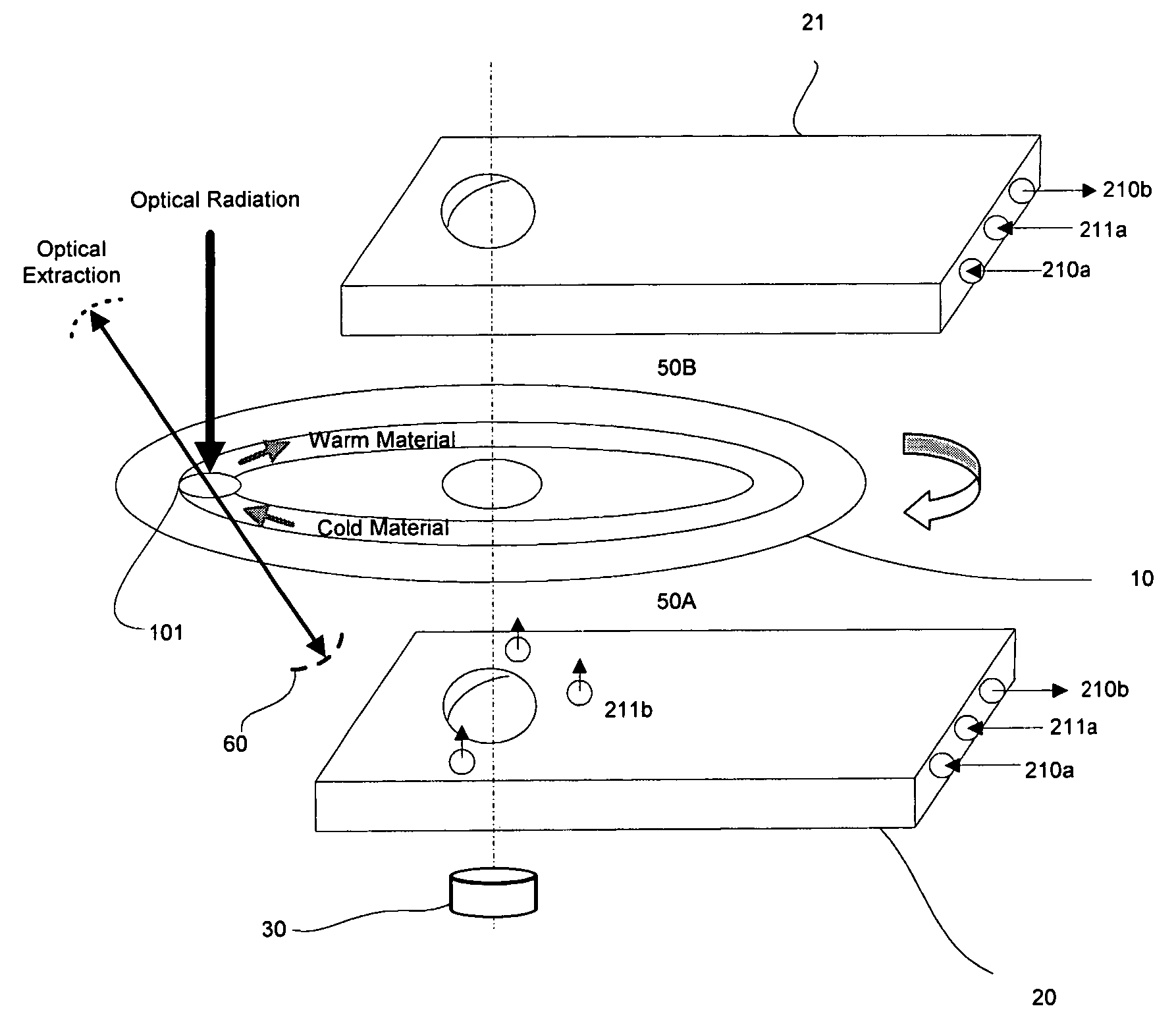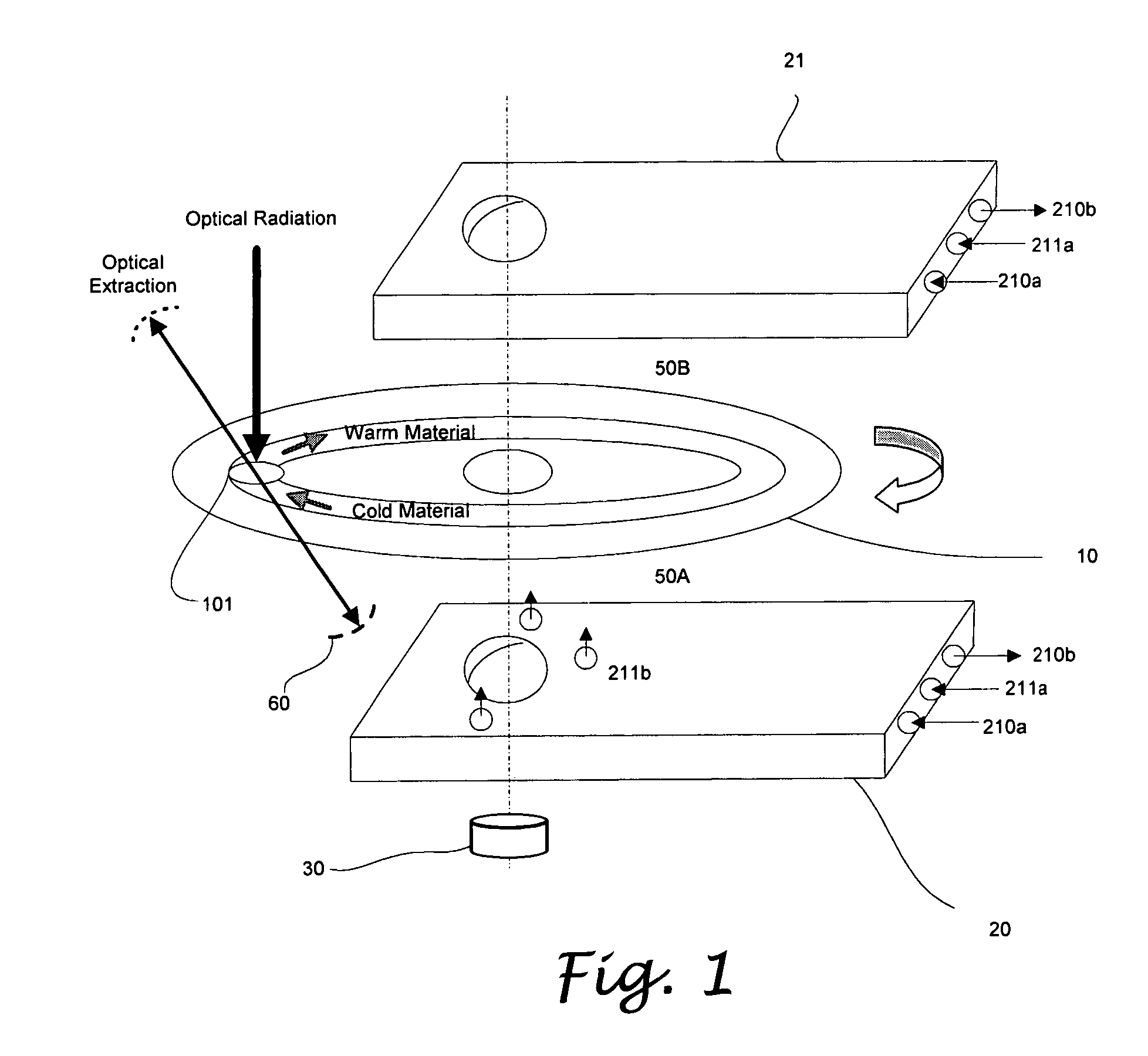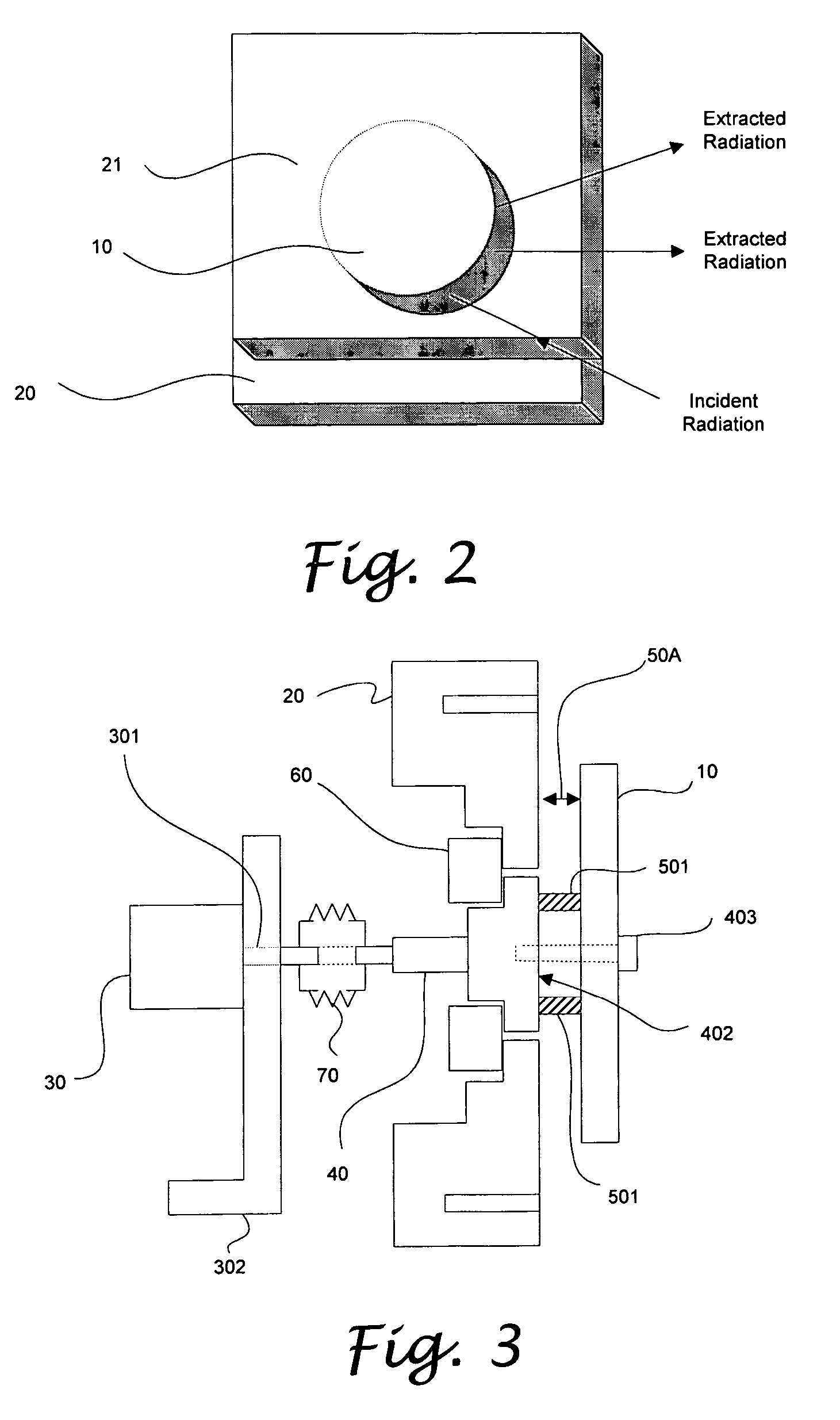Rotary disk laser module
a laser module and rotary disk technology, applied in semiconductor lasers, lighting and heating devices, instruments, etc., can solve the problems of fundamental limitation of the brightness of conventional continuous-wave or quasi-continuous-wave, unavoidable, and inability to fully correct, so as to improve the heat dissipation effect
- Summary
- Abstract
- Description
- Claims
- Application Information
AI Technical Summary
Benefits of technology
Problems solved by technology
Method used
Image
Examples
Embodiment Construction
[0022]As discussed above, a rotary disk module as provided can be applied in various devices for many different purposes such as providing gains for laser amplifiers and oscillators, wavelength conversion for nonlinear optics, providing phase modulation in a high-power laser beam, and generating an optical radiation from an electric energy. One of the optical applications is used as an example as follows for explaining and describing the detailed structures and functions of the rotary disk module. However, it will be appreciated that the application of the rotary disk module should not be limited to the optical application.
[0023]FIG. 1 illustrates an optical rotary disk module 1 that comprises a rotatable optical disk 10 inserted between a pair of heat sink 20 and 21. As shown, a part of the optical disk 10 is exposed from the heat sinks 20 and 21, such that the optical radiation can be incident thereon and extracted out therefrom. It will be appreciated that, in the current embodim...
PUM
 Login to View More
Login to View More Abstract
Description
Claims
Application Information
 Login to View More
Login to View More - R&D
- Intellectual Property
- Life Sciences
- Materials
- Tech Scout
- Unparalleled Data Quality
- Higher Quality Content
- 60% Fewer Hallucinations
Browse by: Latest US Patents, China's latest patents, Technical Efficacy Thesaurus, Application Domain, Technology Topic, Popular Technical Reports.
© 2025 PatSnap. All rights reserved.Legal|Privacy policy|Modern Slavery Act Transparency Statement|Sitemap|About US| Contact US: help@patsnap.com



